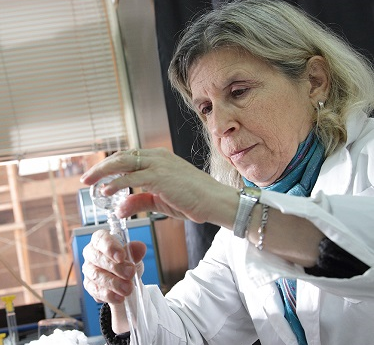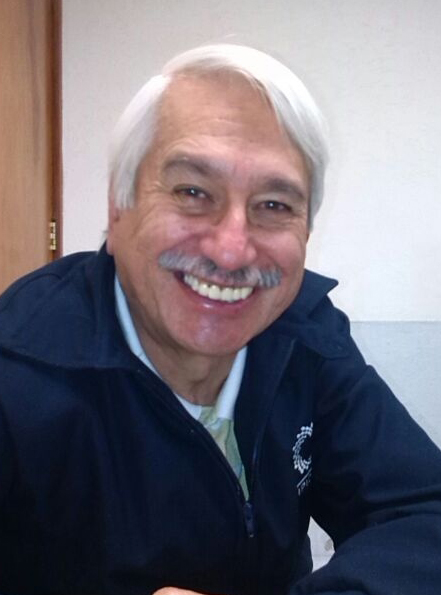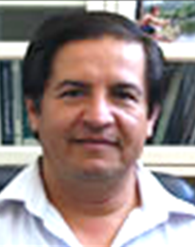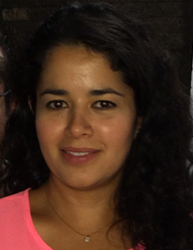TUTORIAL COURSES
Course : Advanced Oxidation/Reduction Technologies for treatment of waters, air and soils. Marta Litter

Prof. Dr. Marta
Chemistry of the Environmental Remediation Division, Chemistry Management, National Atomic Energy Commission of Argentina, Buenos Aires, Argentina
Prof. Dr. Litter is Doctor in Chemistry (Buenos Aires University, 1974) with Postdoctoral stage (University of Arizona, USA, 1983). She is head of the Chemistry of the Environmental Remediation Division, National Atomic Commission, Superior Researcher of the Research Council and Full Professor of the University of General San Martín, in Argentina. She authored more than 250 publications in journals, books and chapters of books. She received twice the Science and Technology Mercosur Prize (2006, 2011). She was designated pioneer on photocatalysis in Argentina by 4th LACP3, 2016.
Abstract: The commonly named Advanced Oxidation/Reduction Technologies or Processes (AOT/ARTs o AOP/ARPs are a group of processes for the treatment of environmental effluents involving the generation and use of powerful transient species, principally the hydroxyl radical (HO•). This radical can be generated by photochemical processes (including solar light) or no photochemical processes and has a high efficiency for oxidation of environmental pollutants. The processes can also transform other toxic pollutants as metals and metalloids and can be applied to the recovery of noble metals. The most studied are Heterogeneous Photocatalysis, Fenton reactions, Ultrasound, etc. Most AOT/ARTs are applied to the remediation and detoxification of special waters, generally at small or medium scale, either alone or combined among them or with conventional technologies. They allow also disinfection by destruction of bacteria and viruses. One of them, heterogeneous photocatalysis, is successfully applied to the treatment of pollutants in the gas phases (outdoors or indoors). The course offers scientific bases for the comprehension of fundamentals and conditions for application of the Advanced Oxidation/Reduction Technologies for treatment of waters, air and soils. In some cases, the scale of use, the yields and the relative costs are included. The course is oriented to doctoral students and young researchers graduated in Chemistry or Chemical Engineering, and requires an ample knowledge of Chemistry.
Keywords: Advanced Oxidation/Reduction Technologies or Proceses, Heterogeneous Photocatalysis, Fenton Processes, Ultrasonolysis.
Course : Electron Energy Loss Spectroscopy (EELS): Theory and applications. Miguel Avalos Borja

IPICyT, División de Materiales Avanzados
The EELS technique (Electron Energy Loss Spectroscopy) is an analytical technique that probes the electronic excitations of a sample. This technique can be mounted on various instruments like scanning, scanning Auger or transmission electron microscopes. In the latter case (TEM instruments) it has the additional advantage of combining high spatial resolution with high sensitivity to chemical environments provided by EELS.
In the course, I will discuss the fundamentals of this technique and various topics as instrumentation, “zero loss” peak, plasmons, chemical identification, chemical quantification, fine effects, chemical maps, radial distribution function, etc.
Course: Scanning Electron Microscopy and Energy dispersive X-Ray Spectroscopy (SEM-EDS): Theory and practice. Ricardo Navarro Mendoza y Paulina Lozano Sotomayor

Dr. Ricardo Navarro Mendoza is Doctor in Analytical Chemistry (Université Pierre et Marie Curie, Paris VI, France, 1994). He is head of the Electron Microscopy Laboratory and member of the Research Group called Analytical Chemistry of Environment and Industrial Processes (Chemistry Department, Natural and Exact Science Division, University of Guanajuato). He authored more than 60 publications in journals, books and chapters of books.

Dra. Paulina Lozano Sotomayor is Doctor in Plant Biotecnology (LANGEBIO-CINVESTAV, 2016). Since 2014, she is in charge of electron microscope operation.
Abstract: Scanning Electron Microscopy (SEM) is a good approach to analyze morphology and surface topography in a wide range of samples. Last generation of Electron Microscopes, as is the case of Field Emission Scanning Electron Microscope (FESEM), simplifies the sample preparation, improves image resolution and gives much more information about the structure of different kind of samples. In this course, we will present the fundamentals of this technique and the different detectors used in SEM. Special attention will be payed to the Energy Dispersive X-Ray Spectroscopy (EDS) coupled to SEM, which is a powerful and useful technique in the characterization of biologic and inorganic materials. SEM-EDS allows the determination of the chemical composition and elemental distribution in a sample. During the experimental practice, we will analyze some samples using the different available detectors and the obtained information will be discussed. In order to show the reaches and potential of the technique in photocatalysis and photoelectrocatalysis research, most of the analyzed samples are materials that have been developed for this kind of applications.
Keywords: Scanning Electron Microscopy, Energy Dispersive X-Ray Spectroscopy, photocatalysis, photoelectrocatalysis.
Topics:
- The principles of electron microscopy
- Types of electron microscopy
- SEM detectors
- Energy Dispersive X-Ray Spectroscopy (EDS) coupled to SEM
- SEM application in photocatalysis and photoelectrocatalysis research
